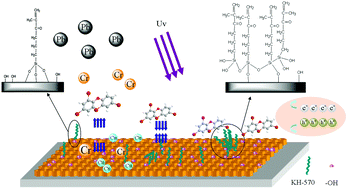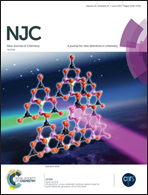Titanium dioxide nanotube arrays with silane coupling agent modification for heavy metal reduction and persistent organic pollutant degradation
Abstract
Among the technologies for removal of deposited heavy metals and degradation of persistent organic pollutants, TiO2 semiconductor catalysts have gained extensive attention owing to their excellent catalytic ability, relatively stable physical and chemical properties and competitive price. But there are still some drawbacks associated with these TiO2 semiconductor catalyst materials such as their weak adsorption and photocatalytic abilities in managing the organic pollutants and difficulties in recycling the TiO2 powder (P25). Therefore, a new class of TiO2 nanotube (TiO2-NT) arrays was synthesized using the silane coupling agent KH570 as a modifier and applied in the reduction of heavy metals, and degradation of phenol and persistent organic pollutants like Poly Brominated Diphenyl Ethers (PBDEs). The products were thoroughly characterized by SEM, TEM, DTG, AFM, BET, EDS, DRS and XRD, which confirmed that the surface of TiO2 was well modified by KH570. From the degradation experiment of phenol and BDE47, along with the heavy metal reduction experiment we can see that the catalytic efficiency (2 h) of the modified catalyst was 5%, 15% and 3–20% higher than that of the unmodified catalyst, respectively. As a kind of hole scavenger on the surface of catalysts, the modified TiO2 nanotube arrays could not only enhance the adsorption effect of catalysts on organic pollutants, but also increase the electronic separation efficiency of holes. The results also indicated that this new class of catalyst had advantages both in surface modification and materials recycling, providing a new direction in environment pollution control.



 Please wait while we load your content...
Please wait while we load your content...